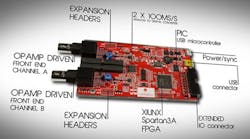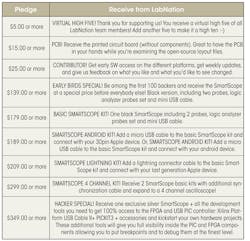Kickstarter (Greenpoint, Brooklyn) was launched in April 2009 and is dedicated to aiding the funding of creative projects. It’s the home for everything from films, games, and music to art, design, and technology. Kickstarter is full of projects, big and small, that are brought to life through the direct support of people who make pledges to the project creator. Since its launch, 5.5 million people have pledged $960 million, funding 55,000 creative projects. Thousands of creative projects are raising funds on Kickstarter right now.
Being open and sharing ideas is an essential part of Kickstarter. The platform is collaborative by nature, and is a powerful community-building tool for project creators. If you are unwilling to share information about your project with potential backers then Kickstarter probably isn’t for you.
Before they are launched, Kickstarter reviews each project. A member of its Project Specialist team does a quick review of each project to make sure it meets Kickstarter’s guidelines. They verify that it’s a creative project in one of 13 categories, and that it has a specific, finite goal. They do not investigate a creator’s ability to complete their project. Project Specialists may also offer the creator helpful feedback on ways to structure or present their project.
Creators come together with backers to bring Kickstarter projects to life. They ask that creators in hardware and product categories be clear with backers about the work remaining in their project, and their prior experience in hardware and design. Kickstarter asks that hardware projects be shown as they are — even if it’s just an early working prototype. They don’t allow photorealistic renderings or simulated uses of products. Plus, they ask creators in these categories to detail for backers how they’ll produce their product and whether they’ve done things like it before.
Hardware and Product Design projects are prohibited from offering rewards in quantities greater than one. Multiple quantities can imply that rewards are shrink-wrapped and ready to ship, which can reinforce the misconception that Kickstarter is a store, which it isn’t.
Starting A Project
Anyone that meets Kickstarter’s creator requirements is eligible to launch a project on Kickstarter. To start, go to the Kickstarter website: http://www.kickstarter.com. Click the green "Start a project" button on the start page to begin building your project. Meanwhile, feel free to save your project as a draft and return to finish it up or submit it for review at a later date.
Kickstarter is open to backers all over the world. Meanwhile, project creation is currently available to individuals in the US, UK, Canada, Australia and New Zealand.
Designers using Kickstarter have complete control over and responsibility for their projects. Kickstarter is a platform and a resource; it is not involved in the development of the projects themselves. Anyone can launch a project as long as it meets Kickstarter’s guidelines.
Project creators set a funding goal and deadline. If potential backers like a project, they can pledge money to make it happen. Funding on Kickstarter is all-or-nothing — projects must reach their funding goals to receive any money. All-or-nothing funding might seem scary, but it’s amazingly effective in creating momentum and rallying people around an idea. To date, an impressive 44% of projects have reached their funding goals.
Backing a project is more than just giving someone money. It’s supporting their dream to create something that they want to see exist in the world. People rally around their friends’ projects, fans support people they admire, and others simply come to Kickstarter to be inspired by new ideas. Some projects take longer than anticipated, but creators who are transparent about issues and delays usually find their backers to be understanding.
A U.S.-based creator must:
· Be 18 years of age or older
· Be a permanent US resident with a Social Security Number (or EIN).
· Have a US address, US bank account, and US state-issued ID (driver’s license).
· Have a major US credit or debit card.
Projects
· Everything on Kickstarter must be a project with a clear goal, like making an electronic instrument. A project will eventually be completed, and something will be produced by it.
· Kickstarter cannot be used to raise money for causes, whether it's the Red Cross or a scholarship, or for "fund my life" projects, like tuition or bills.
· Creators cannot offer equity or financial incentives (ownership, share of profits, repayment/loans, cash-value equivalents, etc.).
· Projects cannot resell items or offer rewards not produced by the project or its creator.
· Creators cannot promise to donate a portion of funds raised or future revenue to a cause.
· Projects cannot offer rewards in bulk quantities (more than 10).
· Kickstarter cannot be used to fund websites or apps focused on e-commerce, business, and social networking.
· Kickstarter cannot be used to fund software projects not run by the developers themselves.
· Kickstarter cannot be used to buy real estate.
· Projects cannot offer alcohol as a reward.
· Projects cannot offer genetically modified organisms as a reward.
· No self-help material (books, videos, etc.). This includes projects that offer (or produce materials that offer) business, emotional, financial, health, medical, sex/seduction, or other self-help advice.
· No offensive material (hate speech, etc.); pornographic material; or projects endorsing or opposing a political candidate.
· No tobacco, drugs, and drug paraphernalia; energy food and drinks; or nutritional supplements.
· No contests, raffles, coupons, gambling, or lifetime memberships.
· No bath, beauty, and cosmetic products; electronic surveillance equipment; eyewear (sunglasses, prescription glasses, and others); firearms, weapons, knives, weapon accessories, and replicas of weapons; medical, health, safety, and personal care products; or infomercial-type products.
Before launching your project, you should:
· Make a detailed budget of your costs. Use this to set your funding goal.
· Look closely at other Kickstarter projects, especially Staff Picks.
· Brainstorm with friends about what rewards to offer and other project ideas.
· Consult Kickstarter School for tips and tricks from our staff, as well as the tips posts on our blog.
· Have a plan for spreading the word about the project.
· Running a project is a lot of fun and a lot of work. Make sure you're ready before you launch!
Project Duration
The maximum project duration can last anywhere from 1 to 60 days. Kickstarter has found that projects lasting any longer are rarely successful. They recommend that project deadlines are set at 30 days or less. Shorter durations have higher success rates, and will create a helpful sense of urgency around your project.
Develop a Kickstarter project page on the Internet
After visiting your project page backers should have a clear sense of:
· What it is you are trying to do
· How you will do it
· How the funds will be used
· Your qualifications to complete this project
· The identities of the people on your team (if you have one)
· How far along your project is
The more information you share, the more you will earn your backers’ trust.
Is a video required to launch? How do I make a good one?
Videos are not required to launch, but projects with a video succeed at a much higher rate (50% vs. 30%), and they also raise more money. So we highly recommend that you include one! Your project video's file size must be 5GB or less and one of the following file types: MOV, MPEG, AVI, MP4, 3GP, WMV, FLV
For video encoding, use WMV format in Windows. On Mac, use H.264. In both cases, the key variable is the “bit rate,” so look for that box. If it’s measured in kilobits per second (kbps), try 1500 to start. If it’s measured in megabits per second (Mbps), try 1.5. If the file is too big: Make that number smaller. If the quality seems bad: Make it bigger.
What can be offered as a reward?
Rewards are typically items produced by the project itself — a p.c. board of the unit, one of the units, etc. Anything that brings backers into the creative process is a great approach. The table lists the rewards given to those who pledge money for a SmartScope project.
Rewards tiers can be set for any pledge amount, up to the maximum pledge. Rewards must all be eligible per Kickstarter’s project guidelines, which include a list of prohibited items and subject matter.
Estimated Delivery Date
The estimated delivery date for a reward is the date you expect to deliver that reward to backers. If you're offering more than one thing in a single reward tier, set your estimated delivery date to when you expect everything in the reward tier to be delivered.
If you're not sure what the estimated delivery date is for a reward, take some time out to create a timeline for your project so that you have a good sense of when you'll complete it. Choose a delivery date that you feel confident about and will be working towards. Don't be afraid to give yourself some breathing room. It's always good practice to under-promise and over-deliver.
How long does a project remain on Kickstarter?
Forever! Projects are not closed or taken down; they remain on site for reference and transparency.
For the same reasons, projects cannot be deleted, even if they were canceled or unsuccessful. Please note that deleting your Kickstarter account will not delete your project.
How does Kickstarter Make Money?
If a project is successfully funded, Kickstarter applies a 5% fee to the funds collected in the U.S. Pledges will be processed by Amazon Payments. In the U.K. and Canada, pledges will be processed securely through a third-party payments processor. These payment-processing fees work out to roughly 3-5%. If the project does not reach its funding goal, there are no fees.
Table: LabNation set up these backer rewards for developing its SmartScope (figure). It is a Kickstarter project for an oscilloscope kit that works with both PC, laptop, tablet and smartphone.



